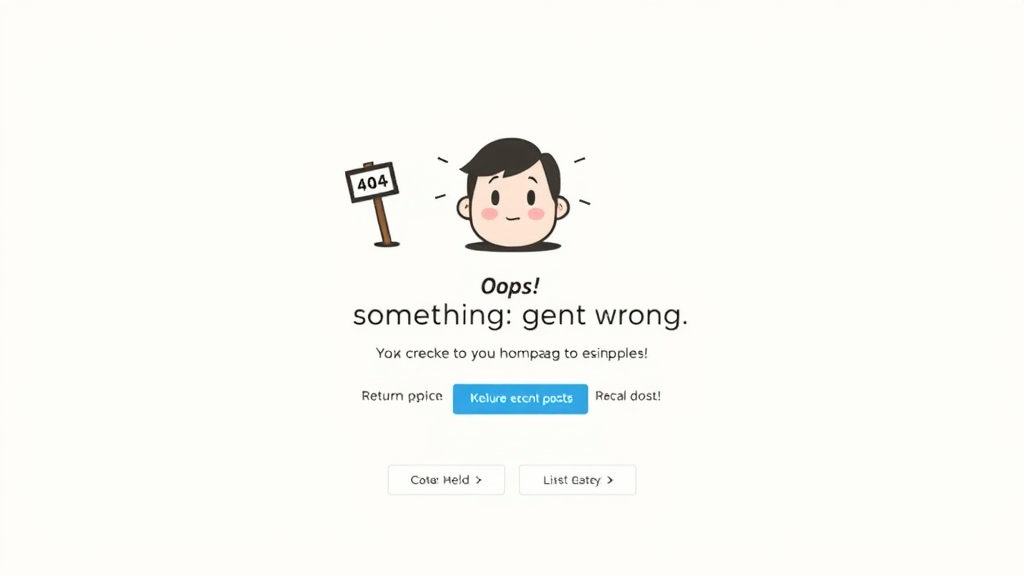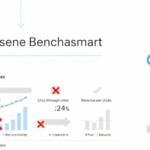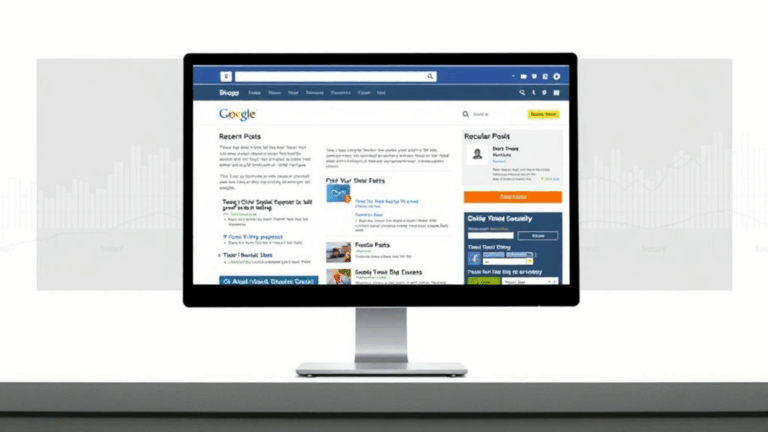Custom Blogger Error Pages That Don’t Wreck Your Traffic
Why Blogger’s Default Error Pages Bleed Bounce Rate
Blogger’s out-of-the-box 404 and 500 error pages are the digital equivalent of a shrug. If someone hits a broken link, they get a blank cereal box that says, “Nothing here,” with no real exit ramp. There’s no search, no branding, and definitely no links back to your main content. Who sticks around after that? No one. Not even bots. Google Search Console starts flaring red flags for soft 404s, and your CTR from rich results drops quietly over time if you let Blogger spill dead ends out like that.
Worse, if you’re running AdSense, this means someone clicked, didn’t land properly, and you basically paid for a user to stare at whitespace. No interstitial, no redirect logic, no tracking fallback. Just lost inventory.
What cracked it for me was realizing that Blogger won’t fire some core JavaScript (like Analytics or GTM snippets) on its built-in error pages. That’s part of the reason bounce tracking data gets patchy — the layout template can’t fully render on those routes. That’s also why your AdSense RPM graph sometimes dips when a sitemap glitch hits.
Getting Blogger to Serve Custom 404s
You can’t actually upload a physical 404.html to Blogger like you might on GitHub Pages or through .htaccess-based setups. You’re boxed into Blogger’s template system. Fortunately, there is a way to trick it into emitting a custom 404 layout using the error page redirection field — but it only takes relative paths (and people forget this part almost every time).
If you punch in a full path like
https://yoursite.blogspot.com/custom-404it won’t work. Blogger silently fails it.
Here’s how it works:
- Create a new page on Blogger, but don’t publish it like a nav-linked content page.
- Name it something internal like
404-placeholder. - Add your custom messaging and any search box or suggestions there.
- Copy the relative slug, say:
/p/404-placeholder.html - In Blogger Settings → Errors and Redirects → Custom Redirects, add a redirect like this:
/404.html → /p/404-placeholder.html (Permanent: Yes)That workaround forces Blogger to display a valid, indexed page (complete with your layout), even on broken URLs. You won’t get full server-level return codes, but it’s good enough to re-engage users before they vanish.
Retaining Branding and Layout on Custom Error Pages
Here’s where people trip unexpectedly: even when routing users to a custom page, Blogger doesn’t always maintain your full page context. If you have conditional tags tied to post vs. page IDs, or if you don’t carefully echo global styles into that 404 template, the layout can warp just enough to feel off-brand.
For example, my sidebar widgets used a conditional like:
<b:if cond='data:blog.url contains "/search/"'>…which broke inside the custom error page because it had no post or search context. The result? The right rail vanished entirely, and suddenly my hand-coded search box was the only thing left on the screen (thankfully).
Fix: build your 404 template visually within the Page editor like any normal post, but mirror the content structure from your theme’s layout display. Honestly, just copy-paste the markup from one of your newer posts into the 404 page and replace <b:includable> blocks with static versions. The fewer Blogger-native conditionals, the more bulletproof this will be across future template changes.
Showing Recommended Posts on Error Pages Without Widget Weirdness
So you’ve got the 404 page rendering, nice layout, clean footer, and all that. But visitors still don’t click anything?
The “aha” moment came when I realized the recommended posts widget doesn’t appear on redirect-based error pages — even though the HTML loads correctly. I was injecting the standard Popular Posts widget, but Blogger doesn’t refresh post context in time for those scripts. Basically, the widget lives but it doesn’t hydrate. Worse, you might end up with a `data:post` block firing null and showing nothing. That’s fun.
Manual Workaround That Actually Works
- Pick 4–5 of your highest CTR posts
- Embed them manually on the 404 page using direct image + anchor tags
- Add one line of inline CSS to make it grid nicely (no flexboxes unless you enjoy Blogger’s inline style overrides triggering layout drift)
This isn’t ideal for dynamic rotation obviously, but it’s effective in converting that dead-end into an actual traffic recovery lane. Add UTM parameters so you can at least track who comes through.
Firefox and the Blogger Error Page Preview Problem
This one burned me while trying to test layout changes: In Firefox (and some Chromium builds running strict privacy extensions), previewing your 404 page using the actual broken URL path trigged a full redirect loop. I’d hit mysite.blogspot.com/thispagedoesnotexist and instead of hitting my custom page, it’d bounce back to Blogger’s base homepage.
What’s happening is Blogger uses fragile referral detection during custom redirects, and if your referrer gets stripped — which Firefox does with Enhanced Tracking on by default — the redirect field fails over silently.
To actually preview your page, don’t use broken URLs. Visit the real page at its published /p/ path. If you absolutely need to test broken URLs, do so in Edge (ironically), since it passes full headers more reliably during local routing.
What AdSense Does on Broken Blogger URLs
Here’s where it gets spicy. If your AdSense units are placed via Blogger’s native widget manager and you rely on adhesive units (like defined via section targeting), you probably assume they cover all requests. But wait.
Broken URLs don’t trigger the full widget tree. The error page is missing DOM anchors AdSense expects. If you ever saw a dramatic RPM drop on days with crawl errors, that’s half the story.
It took me ages to realize my responsive ad units weren’t showing on custom 404s, even though the scripts loaded. The platform expected data-ad-format="auto" to calculate dimensions based on container widths, but the CSS for those containers didn’t exist because I skipped importing the full <b:section> parent blocks in my 404 layout. I was literally feeding ads with no parent divs — and wondering where my revenue went for that hour.
Manual fix? Inject a placeholder <div> with fixed width and use data-ad-slot explicitly. Avoid smart sizing.
Edge Case: Broken Labels, Custom 404s, and Surrogate Paths
An undocumented behavior I’ve seen exactly once but it’s worth flagging: If a user lands on a malformed label URL (like /search/label/=Tech instead of /search/label/Tech), Blogger does NOT route it through 404.html. It hits the homepage silently but flakes out the DOM. Conditional display widgets won’t load, and your theme sees this as a query page without proper filters.
You can’t force a fix for this unless you catch it in a script and manually trigger a redirect. I patched it with this snippet:
if (window.location.href.includes("search/label/=")) {
window.location.href = "/404.html";
}Ugly, but effective. There’s no native catch-all for malformed label paths. You have to shotgun blast it from the client-side after page load, which means you may still take an Analytics hit if users back out early.
Unverified Hunch: Googlebot’s Visit Time Increases on Rich 404s
Okay this is extremely anecdotal, but on one of my multilingual Blogger sites, after implementing a custom 404 with proper content hierarchy, internal links, plus a functioning search box, I noticed something odd in my Search Console crawl stats: “Time spent downloading a page” ticked up on 404s. Not dramatically, but enough to suggest that Googlebot now saw those errors as more complex objects instead of dead-leaf stubs.
Does that mean anything for SEO? Unknown. But if Googlebot acknowledges the extra content, at the very least it’s not bouncing off immediately. Maybe that helps delay soft 404 deindexing. Maybe it’s just network noise. But it’s real data from my panel and another reason to treat your error pages like actual landing pages.














